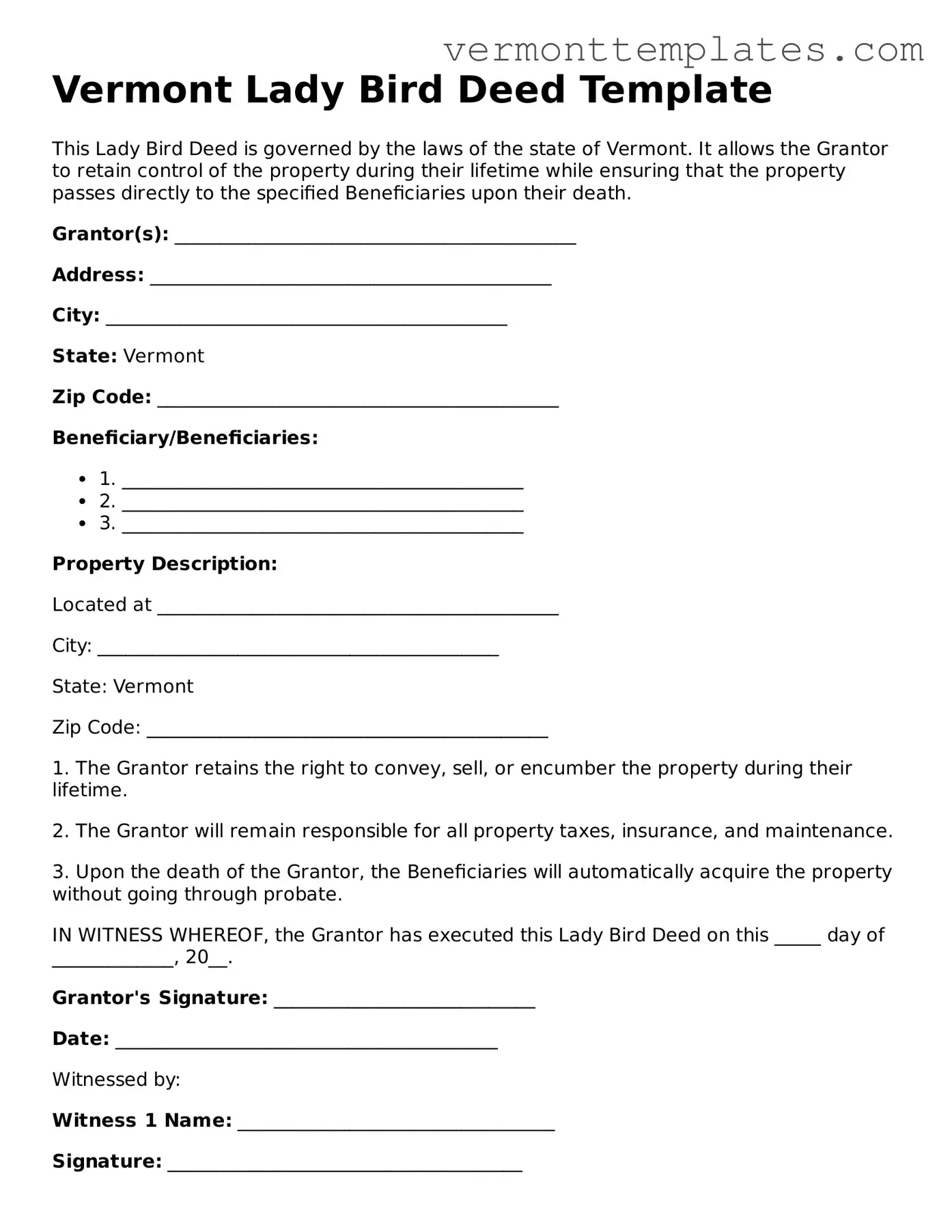Vermont Lady Bird Deed Template
This Lady Bird Deed is governed by the laws of the state of Vermont. It allows the Grantor to retain control of the property during their lifetime while ensuring that the property passes directly to the specified Beneficiaries upon their death.
Grantor(s): ___________________________________________
Address: ___________________________________________
City: ___________________________________________
State: Vermont
Zip Code: ___________________________________________
Beneficiary/Beneficiaries:
- 1. ___________________________________________
- 2. ___________________________________________
- 3. ___________________________________________
Property Description:
Located at ___________________________________________
City: ___________________________________________
State: Vermont
Zip Code: ___________________________________________
1. The Grantor retains the right to convey, sell, or encumber the property during their lifetime.
2. The Grantor will remain responsible for all property taxes, insurance, and maintenance.
3. Upon the death of the Grantor, the Beneficiaries will automatically acquire the property without going through probate.
IN WITNESS WHEREOF, the Grantor has executed this Lady Bird Deed on this _____ day of _____________, 20__.
Grantor's Signature: ____________________________
Date: _________________________________________
Witnessed by:
Witness 1 Name: __________________________________
Signature: ______________________________________
Date: _________________________________________
Witness 2 Name: __________________________________
Signature: ______________________________________
Date: _________________________________________
